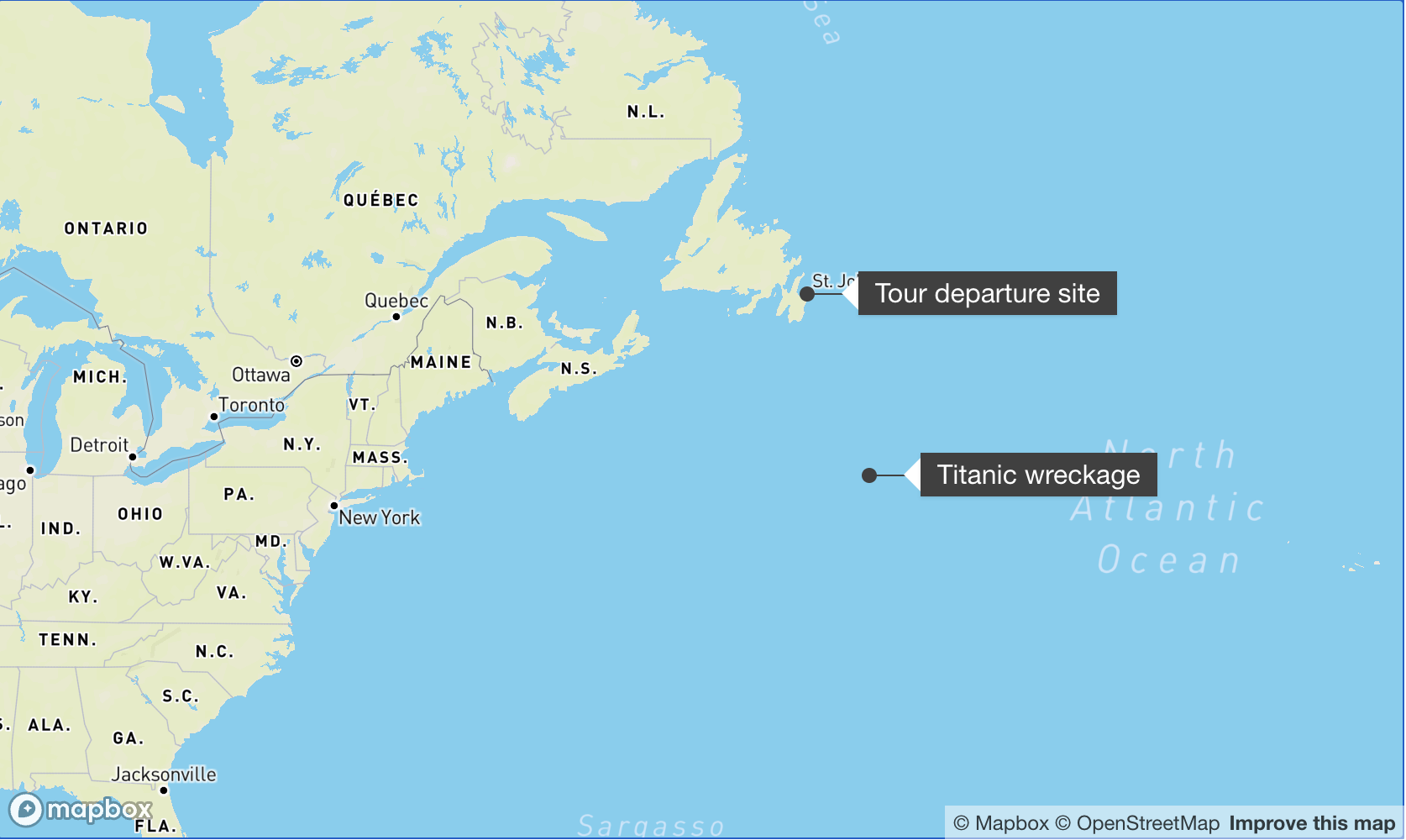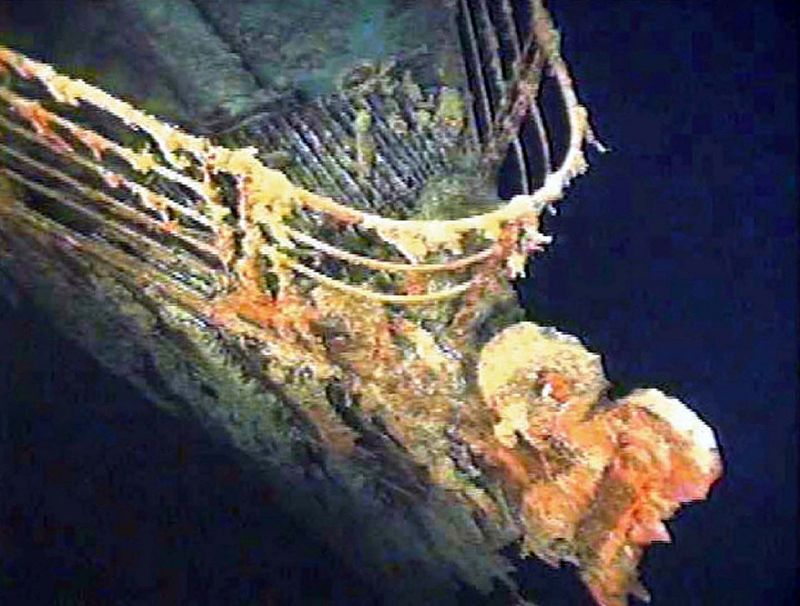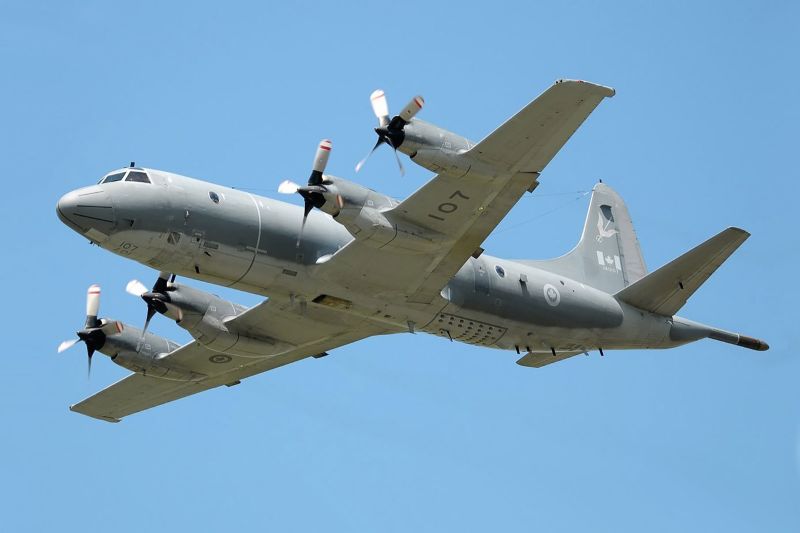Former US Navy submarine captain says "odds don't seem good" for missing crew
From CNN's Brad Lendon
It doesn't bode well that search parties still haven’t heard from the missing submersible, former US Navy submarine captain Thomas Shugart told CNN on Monday.
"While I hope for the best for the submersible’s crew and passengers, I have to say that at this point things look very much in doubt, given that they’ve not been heard from for this long," said Shugart, an analyst at the Center for a New American Security.
Shugart said a locator beacon likely would have detected the vessel by now if it had a "relatively minor issue that forced them to surface unexpectedly."
"If instead they are stuck on the bottom for some reason, I have yet to hear of a rescue capability that could get them back in time," he said. "And if the sub went to the bottom due to flooding, given the extreme depths involved, once again the odds don’t seem good."
Shugart added that his experience is limited with the problems the crew may have run into at these depths.
How did the submersible go missing and how much time do they have?
From CNN's Jessie Yeung
It’s still not clear what happened to the submersible, why it lost contact, and how close to the Titanic it was when it went missing.
The submersible began its two-hour descent to the wreck on Sunday morning, which is about 900 miles (1,450 kilometers) off the coast of Cape Cod, Massachusetts.
It lost contact with the Polar Prince, the support ship that transported the vessel to the site, 1 hour and 45 minutes into its descent, officials said.
Search operations began later that day.
Coast Guard officials estimated on Monday afternoon the submersible had “somewhere between 70 to the full 96 hours” of oxygen — potentially giving rescuers until Friday to locate and retrieve the vessel.

But the depth of the area where they went missing could pose a challenge.
The deepest ever underwater rescue was that of Roger Chapman and Roger Mallinson, who were rescued from a submersible at depths of 1,575 feet in 1973. They were trapped for 76 hours before finally being hauled to the surface.
The Titanic wreckage is much deeper, sitting nearly 13,000 feet below sea level.
Other factors complicating the search include its distance from the coast, local weather conditions, and unknowns like the state of the submersible and whether it has working equipment like acoustic pingers that can be detected by search teams.
Read more here.
Pakistani father and son are on board missing submersible, family say
From CNN's Sophia Saifi in Karachi, Pakistan
A Pakistani father and son are on board a submersible carrying five people to see the wreck of the Titanic at the bottom of the North Atlantic Ocean, according to a statement released by the family Tuesday.
The statement named Shahzada Dawood and his son, Sulaiman Dawood, as being on the "journey to visit the remnants of the Titanic in the Atlantic Ocean."
"As of now, contact has been lost with their submersible craft and there is limited information available," the Dawood family statement said.
"A rescue effort that is being jointly led by multiple government agencies and deep-sea companies is underway to reestablish contact with the submersible and bring them back safely.
"We are very grateful for the concern being shown by our colleagues and friends and would like to request everyone to pray for their safety while granting the family privacy at this time. The family is well looked after and are praying to Allah for the safe return of their family members."
Shahzada Dawood is a trustee of the SETI Institute in California, according to a biography published on its website. According to the biography, Dawood is vice chairman of Dawood Hercules Corporation, part of the Dawood Group.
Titanic's fate has long been a source of fascination. Here are some key facts about the luxury liner
From CNN staff

The submersible that has gone missing in the North Atlantic was part of an expedition to view the wreckage of the RMS Titanic, perhaps the most famous shipwreck in the world.
More than 100 years after its disastrous maiden voyage, the fate of the luxury liner has long served as a source of fascination, and been the backdrop for countless books, fiction and non-fiction and, of course, a blockbuster movie.
The ship set sail from Southampton, England, to New York on April 10, 1912.
Then, between April 14 to 15, it hit an iceberg around midnight and sank in less than three hours.
A total of 1,517 people died and 706 survived out of 2,223 passengers and crew, according to the US Senate report on the disaster.
Here are more interesting facts about the Titanic:
The ship: The estimated cost of construction was $7.5 million. At the time, the RMS Titanic was the largest passenger ship afloat. The ship’s length was 882 feet, 9 inches, and it weighed 46,328 tons. Its top speed was 23 knots. The wreckage is located about 350 miles off the southeast coast of Newfoundland.
How the Titanic sank: The iceberg punctured five of 16 supposedly watertight compartments designed to hold water in case of a breach to the hull. Investigations at the time blamed Capt. Edward Smith for going too fast in dangerous waters, initial ship inspections that had been done too quickly, insufficient room in the lifeboats for all passengers, and a nearby ship’s failure to help. Many maritime safety reforms were implemented as a result of the findings of the investigations.
Smith went down with the ship, and his body was never recovered.
Key dates post-shipwreck:
- September 1, 1985: Scientists from Woods Hole Deep Submergence LAB in Massachusetts, led by Dr. Robert Ballard, and IFREMER, the French Institute Francais de Recherche pour l’Exploitation des Mers, led by Jean Jarry, locate the wreckage of Titanic.
- July 13, 1986: Ballard and his crew use the manned deep-ocean research submersible Alvin to explore the wreckage. The Alvin is accompanied by a remotely operated vehicle named Jason Jr. to conduct photographic surveys and further inspections.
- May 31, 2009: The last known survivor, Millvina Dean, dies at age 97.
- April 8-20, 2012: The 100th anniversary of the Titanic’s voyage. The MS Balmoral traces the ship’s route from Southampton to New York and holds a memorial service, above the wreck, on April 15.
- Summer, 2022: Deep sea investigators Magellan and filmmakers Atlantic Productions use deep sea mapping to create "an exact ‘Digital Twin’ of the Titanic wreck for the first time."
Read more here.
French explorer PH Nargeolet was scheduled to be on the submersible, social media post says
From CNN's Dave Alsup
French diver PH Nargeolet was scheduled to be on the dive with the missing submersible in the North Atlantic, according to a social media post Saturday by businessman and adventurer Hamish Harding.
Harding is one of the passengers on the submersible that went missing during a dive to the wreckage of the Titanic, according to a social media post by his company, Action Aviation.
“The team on the sub has a couple of legendary explorers, some of which have done over 30 dives to the RMS Titanic since the 1980s including PH Nargeolet,” Harding said in a Facebook post, according to CTV News.
Larry Daley, a St. John's-based diver who reportedly made the trip to the Titanic two decades ago, told CBC News Nargeolet was one of the people on the current expedition.
In a news conference Monday, the US Coast Guard Boston did not release the names of any of the five people onboard the missing submersible. It is unclear from the agency if Nargeolet was among those who boarded the vessel the morning after Harding's social media post.
CNN has attempted to reach out independently to Nargeolet with no success.
Deep waters are a big challenge for rescue vessels — even the US Navy's most advanced subs
From CNN's Brad Lendon
Depending where and at what depth the submersible is found, there could be limited options for rescue vessels — even the US Navy's advanced fleet of nuclear-powered submarines.
The Navy's multibillion-dollar nuclear-powered subs can stay under water as long as the provisions for the crew hold out and usually operate at 800 feet or less.
The maximum depth for subs is classified, but reputable experts say the deepest a US Navy sub can go is 1,500 to 2,000 feet, depending upon the class of submarine.
Below those depths, the water pressure on the hull of the submarine would cause it to implode, meaning they can’t dive down to the ocean floor, where the wreckage of the Titanic is located.
The Navy does have specialized rescue submersibles, but even those can only make rescues at depths up to 2,000 feet, according to the Navy’s Underwater Rescue Command.
Deepest rescue: The deepest ever underwater rescue was that of Roger Chapman and Roger Mallinson, who were rescued from a submersible at depths of 1,575 feet in 1973. They were trapped for 76 hours before finally being hauled to the surface.
During that rescue, authorities used other submersibles and a remotely operated, Navy-developed recovery vessel to attach lines to their vessel, the Pisces III, which were then used to pull it back to the surface.
It’s not clear whether these methods could work for the Titan, given the uncertainty around its location.
Search teams could face choppy seas and foggy weather
From CNN's Robert Shackelford
The missing submersible was on an eight-day expedition to the Titanic wreck site, departing from St. John’s, Newfoundland on Sunday.
Weather conditions in the area at the time included choppy seas, with 3 to 6 feet waves, and foggy conditions, according to CNN meteorologists.
While these conditions aren't too out of of the ordinary for the area, they could cause some delays for search parties due to the difficulty of using certain aerial equipment in low clouds.
On Monday, the US Coast Guard said it was "bringing all assets to bear" in the search for the submersible but the effort was "complicated by local weather conditions."
A US search plane is most tracked flight, tracking service says
Flight tracking service Flightradar24 said Monday its most tracked flight currently is a US Air Force C-130, which it said was en route to assist the search for the missing submersible.
"Our most tracked flight right now is a US Air Force C-130 en route to assist with the search for the missing submersible on an expedition to the Titanic," Flightradar24 said in a Twitter post.
Later, the US Coast Guard tweeted that "two C-130 flights have been completed from Coast Guard Air Station Elizabeth City."
This post has been updated.
Here's what we know so far about the search for a missing submersible near Titanic wreckage
From CNN staff

A search and rescue operation is underway for a missing submersible operated by a company that handles expeditions to the Titanic wreckage off the coast of St John’s, Newfoundland, in Canada.
The vessel has 70 to 96 hours of life support, officials said Monday.
Here's what we know so far:
- The timeline: The expedition began with a 400-nautical-mile journey to the wreck site, which is about 900 miles off the coast of Cape Cod, Massachusetts. The submersible began its descent Sunday morning but lost contact with a crew of Polar Prince, the support ship that transported the vessel to the site, 1 hour and 45 minutes into its descent, officials said. The US Coast Guard launched searches on the surface of the water and an aircraft to start conducting aerial and radar searches after it was alerted that the submersible was overdue, Rear Adm. John Mauger told a news conference Monday.
- What we know about the vessel: The submersible, named “Titan,” weighs 23,000 pounds and is made of carbon fiber and titanium, according to the tour operator, OceanGate Expeditions. The 21-foot vessel has life support for up to 96 hours, according to the OceanGate website. Mauger said officials "anticipate that they're somewhere between 70 to the full 96 hours" of oxygen available on the vessel at this point. The Titanic wreckage, discovered in 1985, sits in two parts at the bottom of the ocean nearly 13,000 feet below the surface.
- Who is on board: Five people are in the missing submersible, according to authorities. Businessman Hamish Harding is one of the passengers, according to a social media post by his company, Action Aviation. Typically a pilot, a “content expert” and three paying passengers are on the expeditions, according to the OceanGate website. The cost of joining the eight-day expedition is "from $250,000," according to the operator. Mauger said the Coast Guard is notifying the families of the people on the submersible.
- Search efforts: The effort is incorporating aircraft, sonar buoys and "sonar on the ship that is out there to listen for any sounds that we can detect in the water column," Mauger said. The Polar Prince is also assisting with the search, a co-owner said. The Canadian Armed Forces and the US Coast Guard have deployed aircraft to the remote area of the North Atlantic. The US Coast Guard said Monday it will continue to conduct surface searches throughout the evening.
- Focus on crew: OceanGate Expeditions said Monday it is taking "every step possible" to return the five crew members to safety. "We are deeply grateful for the urgent and extensive assistance we are receiving from multiple government agencies and deep-sea companies as we seek to reestablish contact with the submersible," it said.
- What's next: The Coast Guard said its priority is locating the submersible. If crews do find the vessel in the water, then rescue plans will be formed, Mauger said. At that point, the Coast Guard will reach out to the US Navy, the Canadian Armed Forces and private industry partners to assess what "underwater rescue capability might be available," Mauger said.


